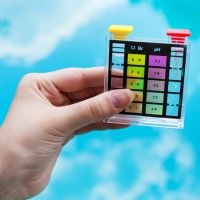A pH sensor, also known as a pH probe or pH meter, is a specialized instrument designed to measure the acidity or alkalinity of a solution, typically on a scale ranging from 0 to 14, with 7 being neutral. These sensors play a crucial role in various fields, including chemistry, biology, agriculture, and environmental monitoring. To understand how pH sensors work, it's essential to delve into their fundamental principles.
At the heart of a pH sensor is a glass electrode that consists of a thin, selective membrane made of special glass. This glass membrane contains ions, such as hydrogen ions (H+) and hydroxide ions (OH-), which can exchange with hydrogen ions in the solution being tested. When the glass electrode is immersed in a solution, an electrochemical reaction occurs at the glass-solution interface, generating a potential difference proportional to the pH of the solution. This potential difference is then converted into a pH reading by the pH meter.
Now, let's explore some innovative applications of pH sensors beyond traditional pH measurement:
-
Food and Beverage Quality Control: pH sensors are used to monitor and control the pH of food and beverage products during production. They help ensure the consistency and safety of products like beer, yogurt, and canned goods.
-
Medical Diagnostics: pH sensors are employed in medical devices to measure the pH of bodily fluids and tissues. They play a role in diagnosing conditions like acidosis and alkalosis and monitoring the pH in wound care.
-
Aquaponics and Hydroponics: pH sensors are essential in soilless farming methods like aquaponics and hydroponics. They help maintain optimal pH levels for plant growth and fish health in these sustainable agricultural systems.
-
Swimming Pool and Aquarium Maintenance: pH sensors are used in swimming pools and aquariums to ensure the water remains at the right pH level for the comfort and well-being of swimmers and aquatic life.
-
Environmental Monitoring: pH sensors are deployed in environmental monitoring to assess the acidity of natural bodies of water. Changes in pH can indicate pollution or the health of aquatic ecosystems.
-
Biotechnology: pH sensors are integrated into bioreactors for monitoring and controlling the pH of cell cultures and fermentation processes, which are vital in biopharmaceutical production.
-
Battery Development: Researchers are using pH sensors to study the pH changes in different types of batteries, helping improve their efficiency and lifespan.
In conclusion, pH sensor are versatile instruments with applications extending beyond traditional pH measurement. Their ability to provide accurate pH data is invaluable in a wide range of industries and scientific fields, contributing to advancements in quality control, diagnostics, agriculture, and environmental protection, among others. As technology continues to evolve, we can expect even more innovative applications for pH sensors in the future.
For more infromation visit kcsencer.


